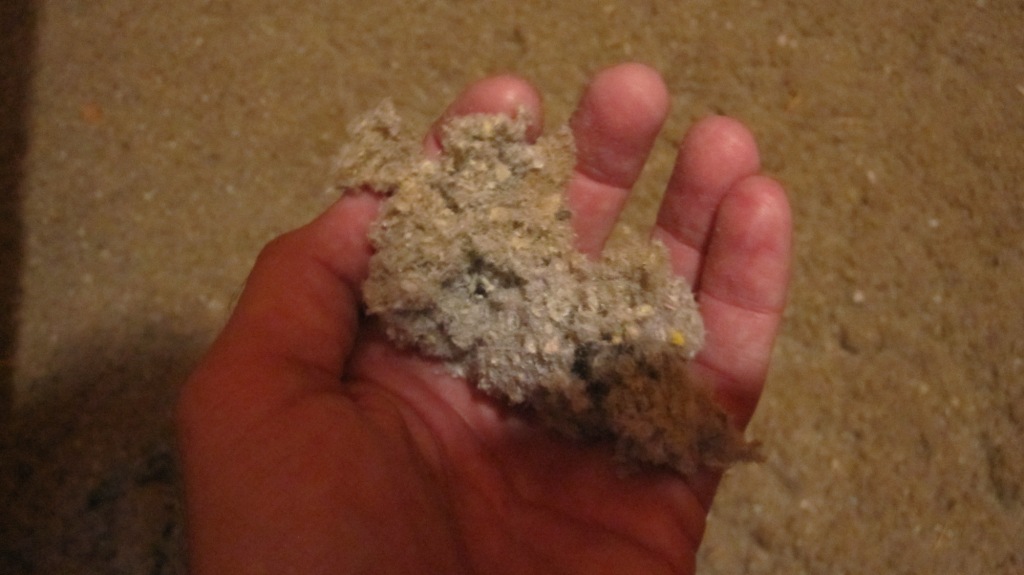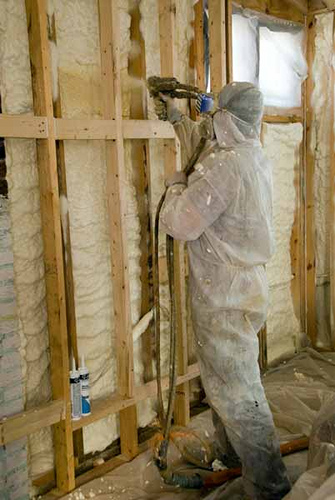Insulation Types: The Good, The Bad and The Expensive
1 Comment | Posted by armchairbuilder in Build Your Own Home, Great Products, Quality Check
Are you trying to choose between the different insulation types available for your new project? If you live in an area with extreme temperatures, insulation and house sealing techniques are critical to creating a comfortable, draft-free home. In this article we will compare the major insulation types available for a new home and talk about the cost and benefits of each.
Insulation Types
Fiberglass batts with Blown Cellulose Ceiling, foamed gaps/electrical holes – This is your least expensive method for insulating which involves installing fiberglass batts to fill the area between the studs. If you build a tight home, enclose this insulation on all six sides and keep water out of the wall cavities, this method will serve you well. To make fiberglass most effective, you want to fill any voids in the wall cavity before insulating…this can be accomplished with expandable foam and caulk. Fiberglass can be damaged by water, so make certain your house is water tight. Also, make sure the installation is correct with batts cut tight to the studs with no bunching or gaps and leave as few splices as possible. Now for the ceilings and band joist (between the floor joists), it’s very difficult to enclose the insulation on all six sides…and this is one of the big drawbacks of fiberglass and cellulose. The other negative of the cellulose…wind currents in your attic can cause movement of the material leaving low and high areas. Also, when you have a vaulted ceiling, the vault must be batted (to prevent the cellulose from sliding down with the force of gravity). For a 1400 square foot ranch I am paying approximately $1500 for this insulation method.
Fiberglass batts with Owens Corning Energy Complete System – The energy complete system actually combines two insulation types. It involves spraying the gaps in the framing system with a low expansion spray foam that provides a flexible seal. The areas covered include gaps in wall sheathing, behind outlet boxes, at bottom plate to floor, in corners between studs…etc. Then, fiberglass batts are installed in the wall cavities and blown cellulose in the ceilings. Owens Corning estimates this process can save you up to 1/3 on your energy bills for heating and cooling. The same disadvantages listed above are relevant here…we just provided a tighter wall assembly than noted above. For a 1400 square foot ranch, I have received estimates of $2500 for this system. Is it worth it…it really depends. If you can do a really high quality job with the foam and caulk, these two methods are very similar from a performance standpoint.
Open Cell Spray Foam – Spray foam is one of the most expensive insulation types. But it really is the superior insulation method if you plan on owning your home for more than seven years (typical payback period in cold climates with possbile energy savings in the 40-50% range). Spray foam is sprayed into wall cavities and on the underside of roof sheathing or backside of ceiling drywall.
The foam expands up to 100 times filling around holes, wires, outlets…etc. The foam not only insulates but also provides an air barrier (preventing drafts more common with fiberglass). Another benefit of spray foam is the improved noise reduction. Since sound is transmitted through air, the foam does a superior job of deadening unwanted noises. In addition, the foam is not damaged by water which is a huge benefit if you have a window or door that leaks.
In fact, open cell spray foam is vapor permeable, which means it will allow any water that gets into it to get out. This is definitely a benefit over trapping the moisture in the wall cavity. As mentioned previously, the cost is the biggest drawback…the material is expensive and installation requires additional labor for covering windows, doors, furnaces…etc. with plastic sheathing and requires excess material to be removed. For a 1400 square foot ranch, the cost is approximately $5000 (roughly 3 to 4 times the cost of fiberglass).
Closed Cell Spray Foam – Although expensive, this insulation materail has some serious benefits. First, closed cell spray foam is very rigid which means it adds to the structural rigidity of your home. This can be very helpful in coastal zones with hurricane activity. In addition, closed cell foam also has the highest R-value at 6-7 per inch (vs. 3.6 per inch for open cell foam and fiberglass). The material is also approved as a vapor retarder at 2 inches or more (this material is frequently used in commercial roofing applications). The biggest negative associated with closed cell spray foam is cost…it is the most expensive insulating method…even more so than open cell foam.
Recommendations
If money is not an object, go with one of the spray foam insulation types for your new building project. If money is tight, and you’re looking for the best value, build an extremely tight home by enclosing all wall insulation on all six sides, caulk and foam any gaps in the exterior of the structure and use a high density fiberglass batt wall insulation impeccably installed.
No matter what insulation you chose, make sure to get your architect, builder consultant and HVAC contractor involved in the decision prior to install. The house performs as a system…so you want each trade partner to work their magic knowing the design criteria. In addition, a properly sealed and insulated home will allow you to downsize your heating and cooling equipment which will save you upfront costs as well as ongoing operating costs.
One other note, a tightly built home will most likely require a heat recovery ventilator that will bring fresh air into the home so be sure to include this in your design and budget.
A couple more articles for help with choosing insulation types…
Insulating Your Finished Basement
How Much Insulation Do I Need in My Attic?
And if you would like to Build Your Own Home, check out all our free videos, articles…and resources to help you get it done.




Insulating your home helps to maintain a comfortable living environment by maintaining inside temperatures and reducing energy costs.Thanks for sharing such important information regarding Insulation.